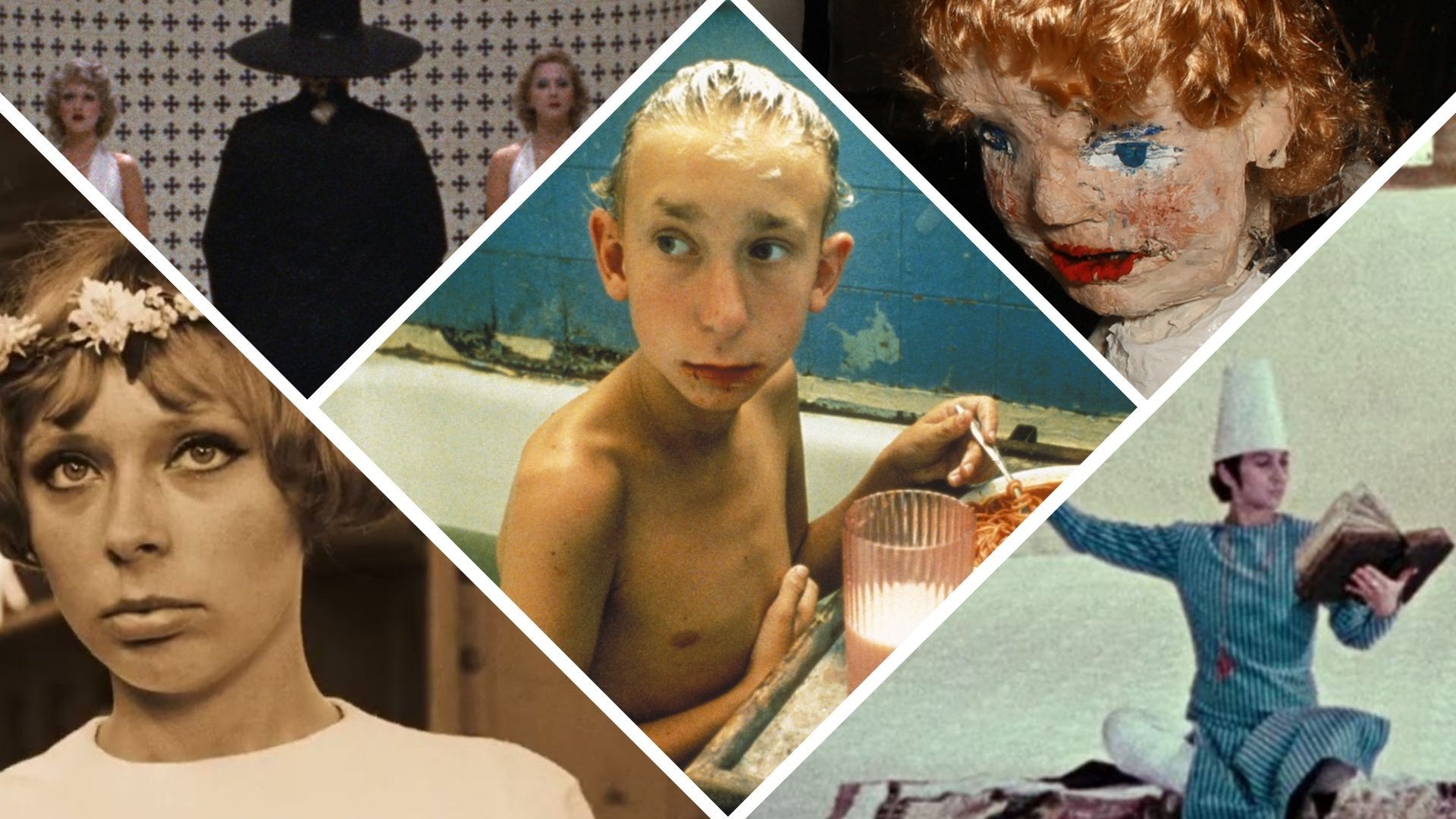Let’s cut straight to the chase, folks. Movies rules are more than just a set of guidelines—they’re the secret sauce that turns a basic flick into a cinematic masterpiece. Whether you’re a movie enthusiast or an aspiring filmmaker, understanding these rules can change the game for you. Think about it: every great film you’ve ever watched followed some kind of structure, rhythm, or rulebook. And yeah, we’re about to break it all down for you.
You know those moments when you’re sitting in the theater, popcorn in hand, and suddenly the plot twist hits you like a freight train? Or when the music swells just right, and you’re on the edge of your seat? That’s not magic, my friend. That’s the power of movies rules at work. These rules help filmmakers craft stories that resonate with audiences, creating experiences that stick with us long after the credits roll.
Now, before we dive deep into the nitty-gritty of this guide, let me ask you something. Have you ever wondered why some films feel like they were made for you, while others leave you scratching your head? It’s all about the rules. And don’t worry—we’re not talking about boring, rigid rules here. We’re talking about dynamic principles that, when used creatively, can elevate any movie to greatness. So, buckle up, because we’re about to take you on a wild ride through the world of movies rules.
- Sophie Rain Of Leak The Untold Story Youve Been Missing
- Bolly4u Org Your Ultimate Destination For Bollywood Entertainment
What Exactly Are Movies Rules?
Alright, let’s start with the basics. Movies rules are essentially the storytelling techniques, cinematic strategies, and production methods that filmmakers use to create compelling films. These rules aren’t set in stone, but they serve as a foundation for crafting movies that captivate audiences. Think of them as the blueprint for building a great story, but with room for creativity and innovation.
Here’s the thing: movies rules aren’t just about following a checklist. They’re about understanding the psychology of storytelling and how it connects with human emotions. For example, have you ever noticed how a well-timed close-up can convey so much without a single word? That’s a rule in action. Or how about the three-act structure that keeps viewers hooked from start to finish? Yep, another rule.
Why Should You Care About Movies Rules?
Let’s get real here. If you’re reading this, chances are you either love movies or want to make them. And let me tell you, knowing the rules can make all the difference. Whether you’re a movie buff trying to appreciate films on a deeper level or a filmmaker looking to improve your craft, understanding movies rules gives you a competitive edge.
- Rhea Ripley Naked The Truth Behind The Clickbait Sensation
- Unveiling The Allure Of Shilpa Sethi A Rising Star In The Spotlight
For movie lovers, these rules help you decode the magic behind your favorite films. You’ll start noticing things you never did before, like how lighting affects mood or how music enhances emotion. And for filmmakers, these rules provide a framework for creating stories that resonate with audiences. It’s like having a cheat code for filmmaking success.
Key Movies Rules You Need to Know
Now that we’ve established why movies rules matter, let’s dive into some of the most important ones. These are the rules that have stood the test of time and continue to shape the film industry today.
The Three-Act Structure: The Backbone of Storytelling
Every great movie follows the three-act structure. Act one sets up the story, act two develops the conflict, and act three resolves everything. It’s simple, yet incredibly effective. Think of it like a rollercoaster ride—there’s a buildup, a thrilling ride, and a satisfying conclusion. Movies that stray too far from this structure often leave audiences feeling lost or confused.
Character Arcs: The Heart of the Story
Characters are the lifeblood of any movie, and their arcs are what make them relatable. A strong character arc shows how a character grows, changes, or learns something over the course of the film. Whether it’s a hero’s journey or a redemption story, character arcs keep viewers invested in the narrative.
Visual Storytelling: Show, Don’t Tell
One of the golden rules of filmmaking is to show, not tell. Instead of relying on dialogue to explain everything, use visuals to convey emotions and ideas. A well-placed shot, a meaningful gesture, or an evocative setting can say more than words ever could. This rule is especially important in action-packed or silent films.
How Movies Rules Influence Different Genres
Here’s where things get interesting. Different genres have their own set of rules that make them unique. Let’s take a look at how movies rules play out in a few popular genres.
Action Films: The Rule of Intensity
Action movies thrive on adrenaline-pumping sequences and high-stakes situations. The rule of intensity dictates that every scene should escalate the tension, keeping viewers on the edge of their seats. From car chases to fight scenes, the key is to maintain a sense of urgency throughout the film.
Romantic Comedies: The Rule of Chemistry
In rom-coms, the rule of chemistry is king. Without a believable connection between the lead characters, the romance falls flat. Filmmakers use subtle cues like body language, witty banter, and shared moments to build this chemistry, making the audience root for the couple.
Horror Films: The Rule of Suspense
Horror movies rely heavily on suspense to keep viewers scared. The rule of suspense involves building anticipation and then delivering a payoff. Whether it’s a jump scare or a lingering sense of dread, the goal is to keep audiences guessing and on edge.
Breaking the Movies Rules: When It Works
Now, here’s the fun part. While movies rules are essential, sometimes breaking them can lead to groundbreaking results. Think about films like "Pulp Fiction" or "Inception"—they defy conventional storytelling but still manage to captivate audiences. The key is knowing when and how to break the rules in a way that enhances the story rather than detracts from it.
Take Quentin Tarantino, for example. He’s famous for bending the rules of chronology, using non-linear storytelling to keep viewers engaged. Or consider Christopher Nolan, who plays with time and space in ways that challenge our understanding of reality. These filmmakers prove that rules are meant to be experimented with, as long as it serves the story.
Creating Your Own Movies Rules
As a filmmaker, you have the power to create your own set of rules. This could mean developing a unique visual style, experimenting with new storytelling techniques, or pushing the boundaries of a particular genre. The beauty of movies rules is that they’re flexible enough to allow for personal expression while still providing a solid foundation.
Here’s a tip: start by studying the masters. Watch films from directors like Martin Scorsese, Steven Spielberg, or Ava DuVernay. Pay attention to how they use movies rules to tell their stories. Then, take what you’ve learned and make it your own. Remember, the best films are those that feel authentic to the filmmaker’s vision.
Common Mistakes to Avoid
Even the best filmmakers make mistakes, but some errors can be avoided by understanding movies rules. Here are a few common pitfalls to watch out for:
- Overloading the story with unnecessary subplots
- Ignoring character development in favor of spectacle
- Forgetting to establish a clear conflict or goal
- Relying too heavily on clichés or predictable tropes
By being aware of these mistakes, you can craft films that are both engaging and original. It’s all about striking the right balance between following the rules and taking creative risks.
Data and Statistics: The Numbers Behind Movies Rules
Let’s talk numbers for a second. Did you know that films following the three-act structure tend to perform better at the box office? Or that movies with strong character arcs receive higher audience ratings on platforms like IMDb and Rotten Tomatoes? These stats highlight the importance of adhering to movies rules while still allowing for creative freedom.
According to a study by Nielsen, films that incorporate visual storytelling techniques see a 25% increase in viewer engagement. And if we look at genre-specific data, action films with high-intensity sequences generate more social media buzz than those without them. These numbers prove that movies rules aren’t just theories—they’re backed by real-world evidence.
Conclusion: Mastering the Art of Movies Rules
So there you have it, folks. Movies rules are the backbone of great filmmaking, but they’re also tools for creativity and innovation. By understanding and applying these rules, you can elevate your appreciation for films or take your filmmaking skills to the next level. Remember, the best movies are those that strike a balance between following the rules and breaking them in meaningful ways.
Now it’s your turn. Whether you’re a movie lover or a filmmaker, take what you’ve learned and start applying it to your own experiences. Share this article with your friends, leave a comment below, or check out some of our other content on the world of cinema. The possibilities are endless, and the rules are just the beginning.
Table of Contents
- What Exactly Are Movies Rules?
- Why Should You Care About Movies Rules?
- Key Movies Rules You Need to Know
- How Movies Rules Influence Different Genres
- Breaking the Movies Rules: When It Works
- Creating Your Own Movies Rules
- Common Mistakes to Avoid
- Data and Statistics: The Numbers Behind Movies Rules
- Conclusion: Mastering the Art of Movies Rules
- Is Michael Consuelos In A Relationship The Latest Scoop You Wonrsquot Believe
- Ari Kytsya Leaked Onlyfans The Untold Story You Need To Know


